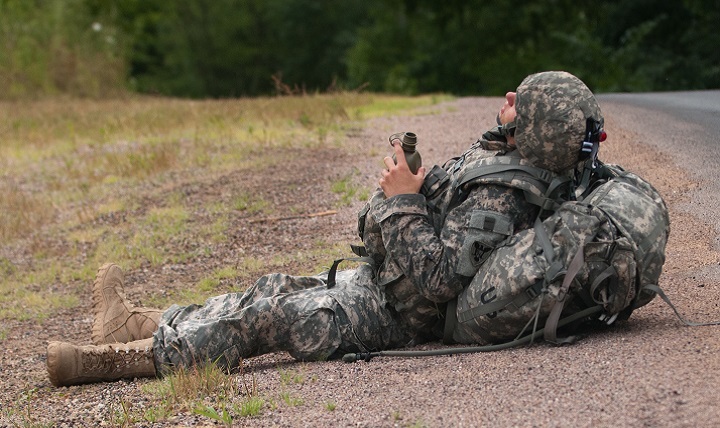
Ask the Flight Surgeon / By CPT Jessica Mullins, D.O.: Q: I’ve always been told to drink plenty of water and take frequent breaks when it’s hot outside to help prevent heat illnesses, but is it really that big of a deal?

health.mil
FS: Heat illnesses are definitely a cause for concern. From 2006 to 2010 there were over 3,000 deaths in the United States attributed to heat-related illnesses alone. Heat injury occurs on a spectrum from mild heat cramps to potentially fatal heat stroke if untreated. Given the increasing temperatures over the coming summer months, it is important to be cognizant of the risk factors for developing heat illness, signs and symptoms, prevention, and how to manage a heat casualty effectively should one occur. From an aviation perspective, the flight line and cockpit are especially high-risk areas that can make pilots and crewmembers susceptible to over-heating. Proper prevention and risk mitigation strategies are essential to protect your unit and avoid unnecessary heat casualties.
What are the risk factors for heat illness?
Both environmental factors and individual differences in susceptibility can cause heat illnesses. Risk factors include the duration of exposure, exertion levels, acclimatization, and the heat category for the preceding three days. A history of a prior heat illness also increases the susceptibility of an individual for repeat heat injury, and soldiers should be monitored closely if they were a heat casualty in the past. Also, poor physical conditioning, dehydration, illness, alcohol use in the past 24 hours, certain medications, and highly motivated individuals are at increased risk. Although being highly motivated is encouraged, this motivation may lead to pushing oneself harder and taking fewer breaks.
What are the signs and symptoms?
Heat illnesses may not always be easily recognized and require close monitoring of individuals in susceptible environments. Symptoms may include muscle cramps, fatigue, dizziness, headache, nausea, vomiting, rapid breathing, and walking unsteadily. Eventually, the body will lose its ability to regulate temperature and a heat injury can quickly progress to heat stroke. Symptoms may include confusion, bizarre or combative behaviors, disorientation, seizures and unconsciousness. If an oral temperature is taken, you may find temperatures exceeding 100 degrees Fahrenheit (F) early in the disease spectrum, and in heat stroke, temperatures may exceed 105 degrees F.
How do I prevent heat illnesses?
When performed properly, prevention and risk mitigation strategies can be extremely successful in avoiding heat-related illnesses. Above all, remember to maintain proper hydration levels by drinking more water. Many pilots and crewmembers purposely avoid drinking fluids to avoid interruptions in flight which increases their susceptibility for dehydration. Consumption of caffeine, which acts as a diuretic, may also increase susceptibility. Feelings of thirst do not begin to occur until you have already lost approximately 2% of your total body weight due to dehydration. Frequent and consistent water intake should always be a priority. On average, 64 ounces of cool water should be consumed daily. However, this amount can vary widely due to the environmental factors listed above.
The current heat category should be determined and monitored using a wet bulb globe temperature. This instrument allows determination of proper work/rest cycles and fluid intake requirements. Avoid high exertional activities especially during heat categories 4 and 5. If absolutely mission essential, consider performing activities in the early morning or evening to avoid the hottest portions of the day. When daily temperatures are changing drastically, allow your soldiers sufficient time to acclimatize. A gradual increase in activities over a minimum of two weeks can allow for the body to adjust to more extreme temperatures. Also, excessively high temperatures may not be necessary to produce heat casualties. High exertion coupled with multiple layers of clothing may produce heat illness in more moderate environments. Before starting any mission, ensure a plan is in place to monitor and manage heat casualties should they occur. For reference, TB MED 507 provides heat category determination procedures and corresponding risk mitigation actions in detail.
What do I do if a heat illness occurs?
If there is any suspicion of a heat illness occurring, seek medical attention immediately. At a minimum, move the heat casualty to a shaded area, loosen or remove clothing, and provide cool drinking water until medical personnel have arrived. If available, use a combination of fans, water mist or ice sheets to produce rapid cooling. If you have been a heat casualty in the past, be aware of your increased susceptibility and be sure your chain of command is informed. As always, contact your local flight surgeon for more information on heat illnesses and prevention strategies.
Stay safe. Dr. Mullins
Questions?
If you have a question you would like addressed, email it to This email address is being protected from spambots. You need JavaScript enabled to view it.; we’ll try to address it in the future. See your unit flight surgeon for your personal health issues.The views and opinions offered are those of the author and researchers and should not be construed as an official Department of the Army position unless otherwise stated
CPT Jessica Mullins D.O. is a flight surgeon at the U.S. Army School of Aviation Medicine, Fort Rucker, AL.








